MP Board Solutions Class 9 Science Chapter 9 – Gravitation
MP Board Solutions for Class 9 Science Chapter 9 – Gravitation are essential for understanding key Physics concepts in the MPBSE curriculum. These well-structured answers help students grasp topics like universal law of gravitation, free fall, mass and weight, buoyancy, and more. Designed as per the latest syllabus, these solutions strengthen conceptual clarity and improve exam preparation. Ideal for revision and practice, they encourage logical thinking and scientific understanding, making them a valuable study tool for scoring well in Class 9 Science exams.
MP Board Solutions Class 9 Science – Gravitation – Exercise Images
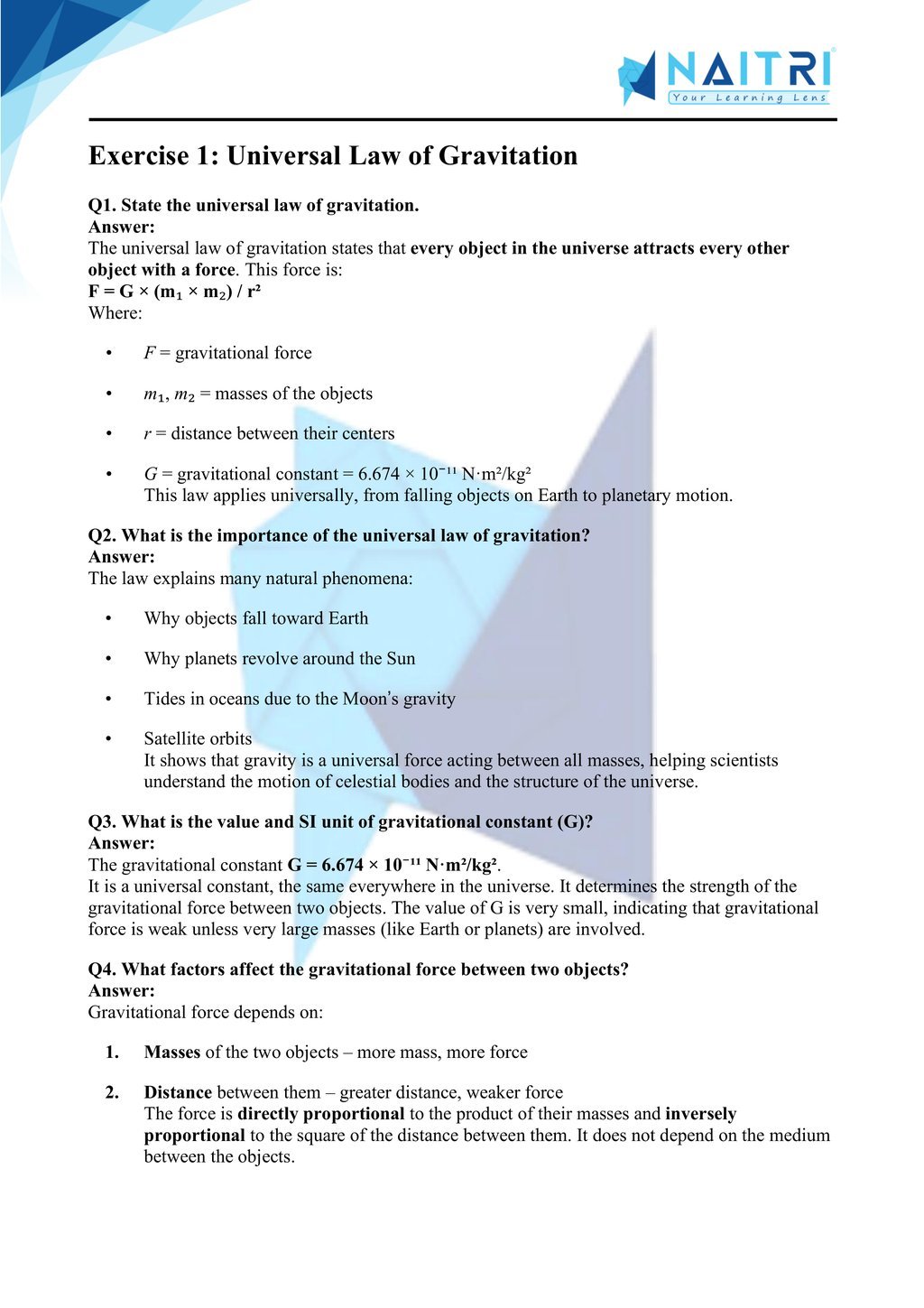
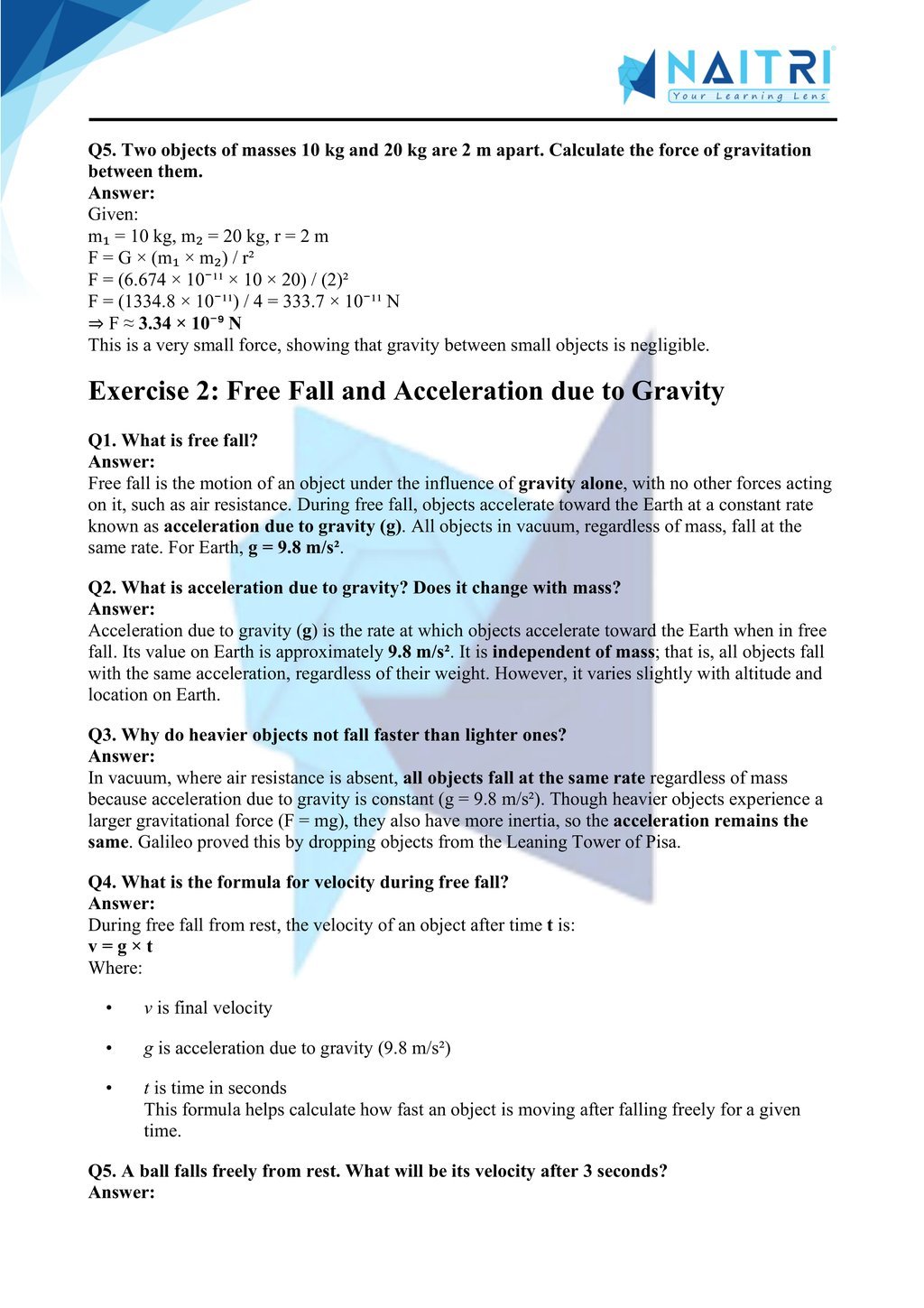
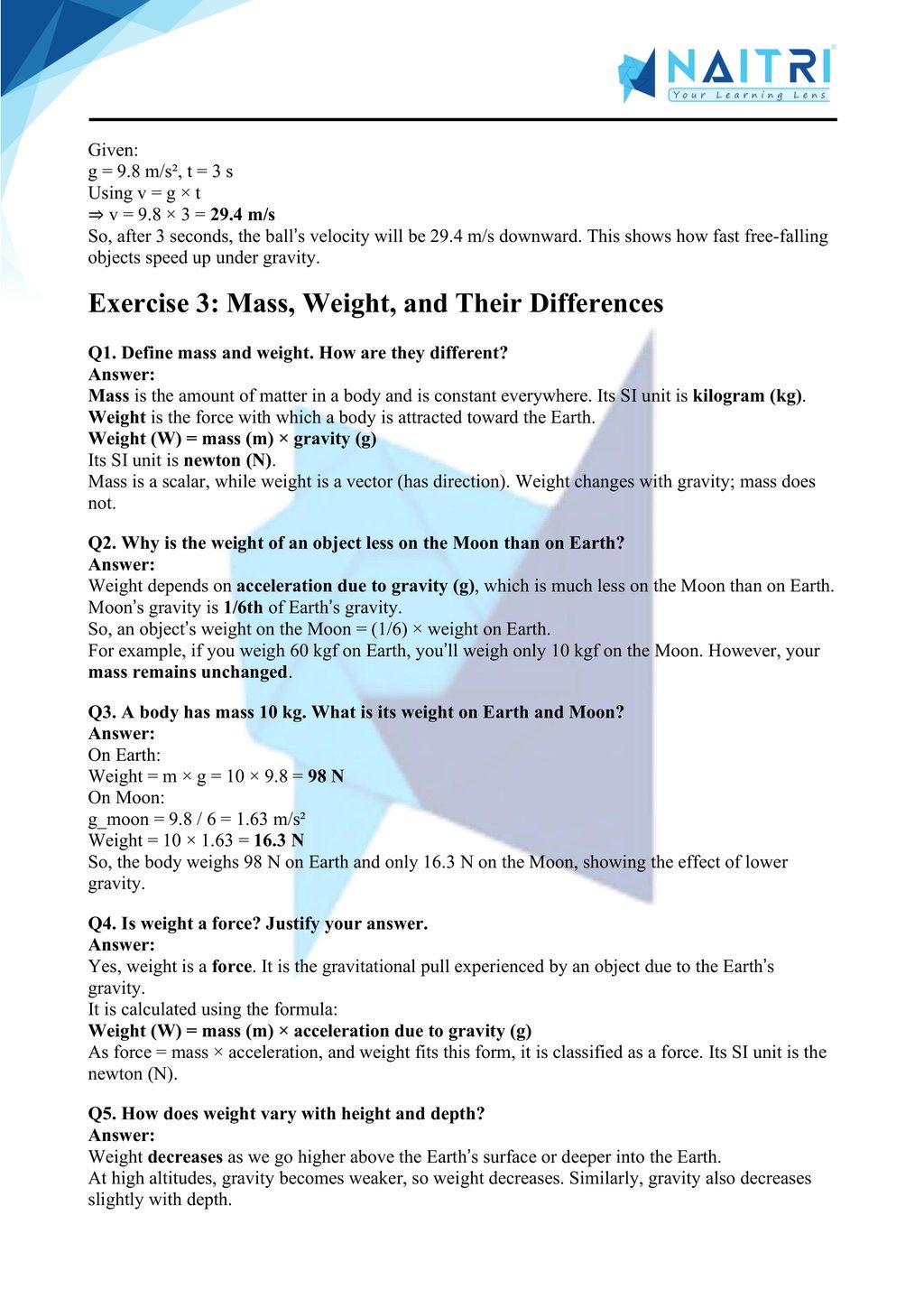
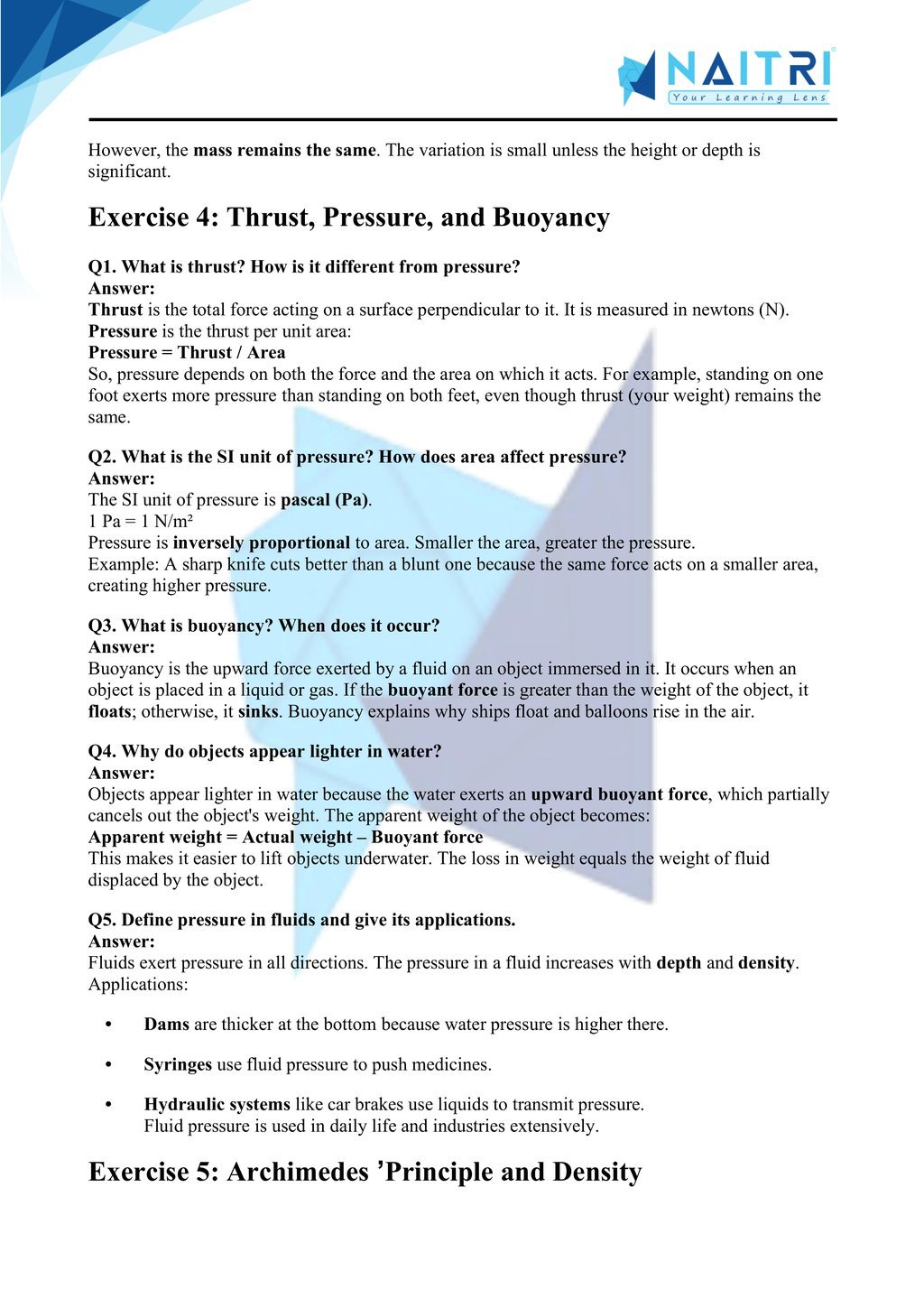
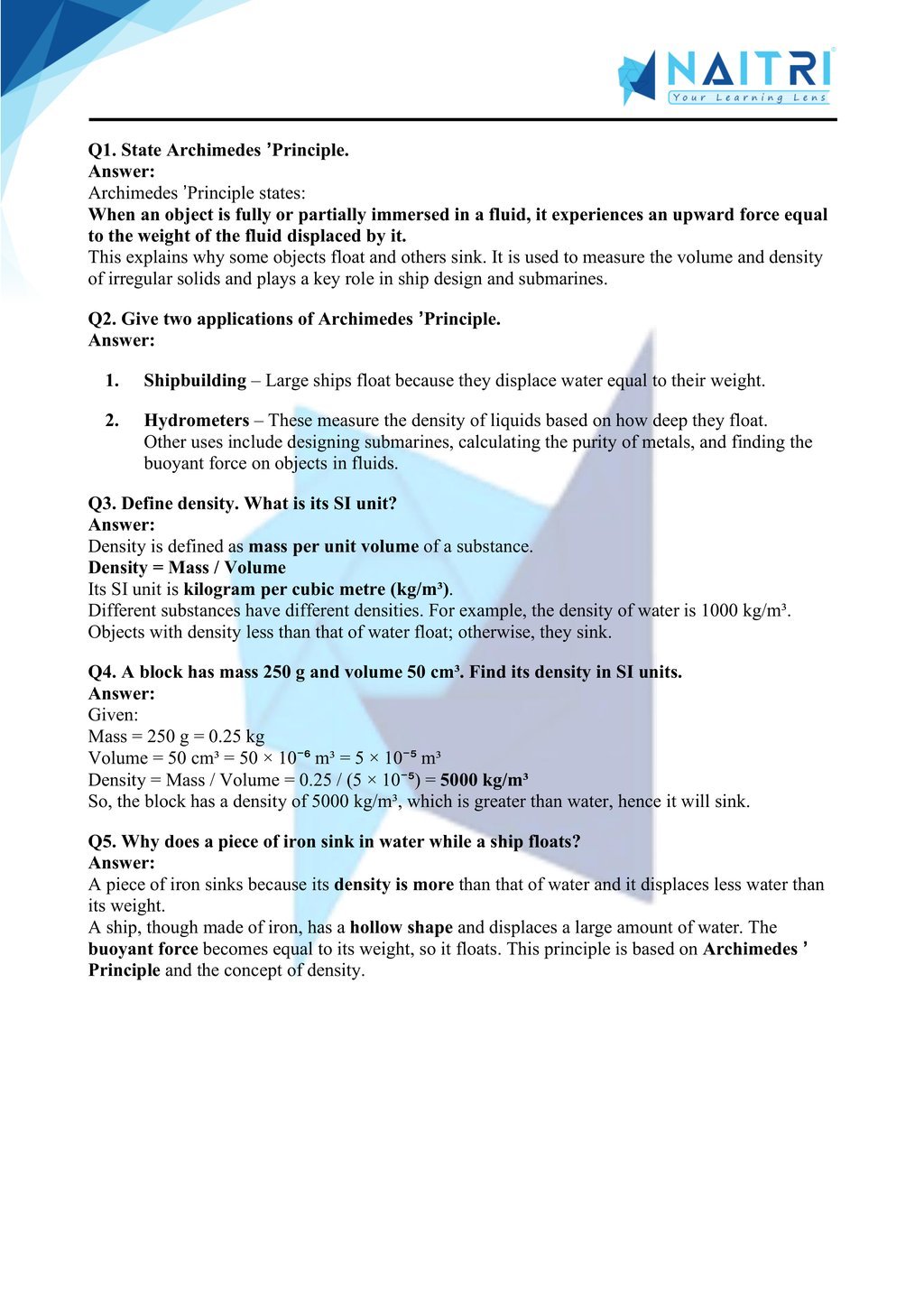
Experience Science Like Never Before – With AR!
Understanding Gravitation is now more exciting and immersive! With the NAITRI App, you can explore complex science concepts through Augmented Reality (AR). See objects fall, orbits form, and buoyancy play out — right in front of you. Our AR-powered lessons make learning interactive, 3D, and fun, helping you retain concepts better and enjoy every topic.



Visualize . Interact . Understand . The future of learning is here
Gravitation – Important Questions with Answers
1. What is gravitation?
Answer: Universal attractive force between two masses.
2. Newton’s law of gravitation.
Answer: F ∝ m₁m₂/r² or F = Gm₁m₂/r².
3. Value of G?
Answer: 6.674 × 10⁻¹¹ N·m²/kg².
4. SI unit of G.
Answer: N·m²/kg².
5. Factors affecting gravitational force.
Answer: Masses and separation distance.
6. Define free fall.
Answer: Motion under gravity alone.
7. Acceleration due to gravity on Earth.
Answer: ≈9.8 m/s².
8. Does g vary with location?
Answer: Yes, slightly with altitude and Earth’s shape.
9. Relationship between g and G.
Answer: g = GM/R².
10. Define mass and weight.
Answer: Mass – amount of matter; Weight – gravitational force on mass.
11. SI unit of weight.
Answer: Newton (N).
12. How does weight change with location?
Answer: Weight decreases with lower g, e.g., on Moon.
13. Weight vs mass (3 differences).
Answer: Mass constant, scalar, kg. Weight variable, vector, N.
14. Explain weightlessness in space.
Answer: In free fall, no normal force acts, making objects appear weightless.
15. Define buoyancy.
Answer: Upward force exerted by fluid on immersed object.
16. Archimedes’ principle.
Answer: Buoyant force equals weight of fluid displaced.
17. Why do objects sink or float?
Answer: If density < fluid → floats; if > → sinks.
18. Pressure due to liquid column.
Answer: P = hρg.
19. Air pressure decreases with altitude: why?
Answer: Fewer air molecules higher up.
20. Application of gravitational formula.
Answer: Calculating planetary masses, satellite orbit.
21. Distinguish mass and weight.
Answer: Mass is same on Moon, weight differs due to gravity.
22. Why is buoyant force present?
Answer: Increased pressure at greater fluid depths.
23. Calculate weight of 15 kg mass.
Answer: W = 15 × 9.8 = 147 N.
24. Weight on Moon if Earth weight = 100 N.
Answer: ≈1/6 → ≈16.7 N.
25. Two examples using Archimedes’ principle.
Answer: Floating of ships; measurement of body volume via displacement.
Gravitation explores gravity as a universal force affecting everything from falling fruit to orbiting satellites. Students understand concepts like free fall, acceleration due to gravity, mass vs. weight, and fluid pressure. Applications such as water storage, irrigation, and dam construction relate directly to MP’s geography and agriculture. The chapter fosters logical reasoning and appreciation of natural forces shaping our world.
Related Chapters You May Like
Download Naitri App
Easy, Visual Learning — Right on Your Phone
Learn with Augmented Reality! The Naitri app makes CBSE and MP Board concepts interactive and fun — even in low-resource settings. Watch lessons, complete homework, take tests, and track progress — all in one place. Anytime. Anywhere.
Available on








